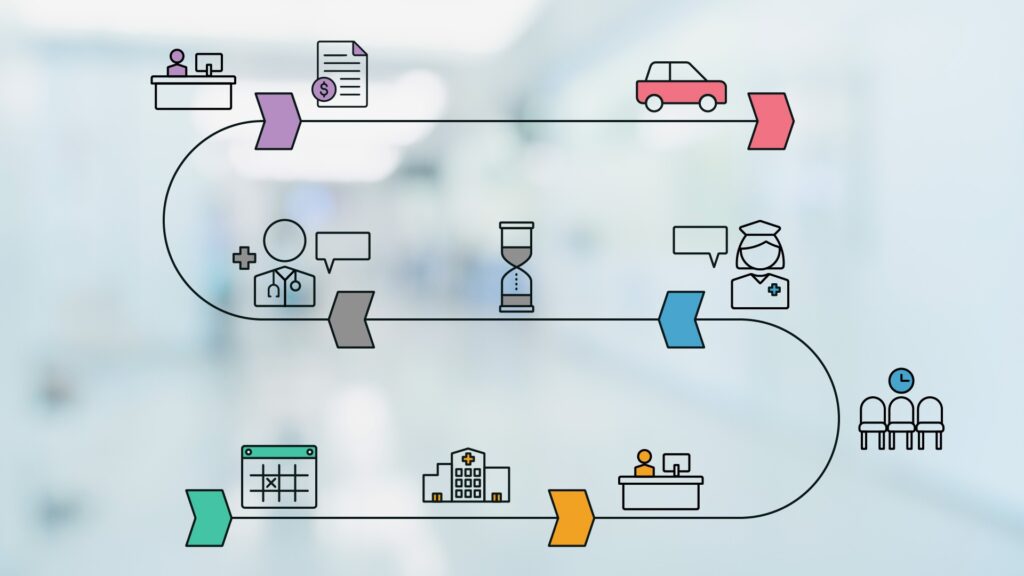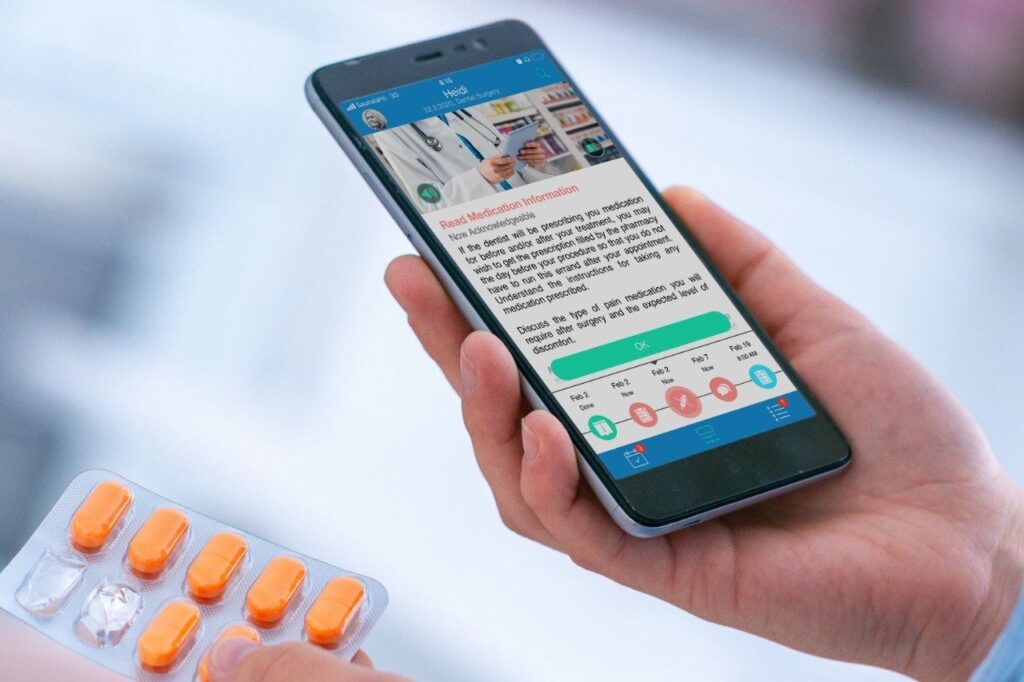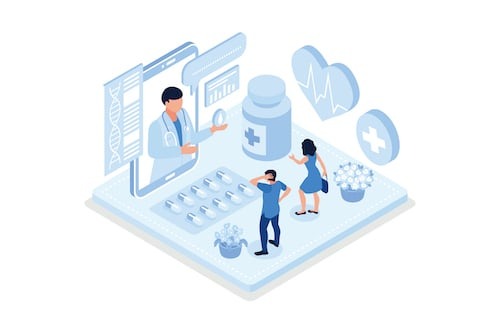Remember the last time you felt truly heard by your doctor? Not just during your fleeting 15-minute appointment, but throughout your entire healthcare journey? For many patients, that feeling is rare.
The traditional model of healthcare often feels transactional: you get sick, you visit the doctor, you leave with a prescription, and then… silence until the next problem arises.
But what if healthcare could be different?
What if it could be a continuous conversation, a partnership that empowers you to take charge of your well-being?
This is the promise of continuous patient engagement, a concept that’s revolutionizing how healthcare providers connect with those they serve.
It’s about moving beyond those periodic check-ups and building a sustained relationship, fostering communication and collaboration every step of the way.
When patients are actively engaged, they’re more likely to adhere to treatment plans, make healthier lifestyle choices, and ultimately experience better health outcomes.
It’s a win-win for everyone involved. If you’re curious about how technology facilitates this shift, you can learn more about how patient engagement platforms can transform your practice.
But how do we achieve this continuous engagement? It’s not just about sending out automated reminders, though those certainly help.
It requires a multifaceted approach, blending technology with a genuine commitment to building relationships.
Let’s dive into some practical tactics that can help healthcare providers move beyond the visit and foster truly continuous patient engagement.
The Foundation: Understanding the Patient Journey

Before we can even talk about engagement tactics, we need to understand the patient journey from their perspective. What are their pain points? What are their concerns? What information do they need, and when do they need it?
Think about it: a patient diagnosed with a chronic condition might feel overwhelmed and anxious. They’ll have questions about their medication, diet, exercise, and potential side effects.
A new mother might need guidance on breastfeeding or postpartum recovery.
An elderly patient might struggle with remembering appointment times or medication schedules.
By mapping out these different journeys, healthcare providers can proactively anticipate needs and tailor their engagement strategies accordingly.
This empathetic understanding forms the bedrock of any successful engagement effort.
Leveraging Technology for Seamless Communication
In today’s digital age, technology offers an incredible array of tools to facilitate continuous engagement. It’s not about replacing human interaction, but rather enhancing it and making it more accessible.
Patient Portals: More Than Just Records
Gone are the days when patient portals were simply a place to view test results. Modern portals are evolving into comprehensive hubs for communication and self-management. Patients should be able to:
- Securely message their care team: For non-urgent questions, this can be far more efficient than phone calls and provides a written record.
- Request prescription refills: Streamlining this process reduces administrative burden and improves patient convenience.
- Schedule appointments online: Empowering patients to book at their convenience is a huge step towards engagement.
- Access educational resources: Tailored information about their condition, treatment plans, and preventive care can be invaluable.
- Track their progress: For chronic conditions, allowing patients to log blood sugar levels, blood pressure, or exercise can foster a sense of ownership.
The key here is to make the portal intuitive and easy to use. A clunky, complicated portal will quickly be abandoned.
Automated Reminders and Personalized Nudges

While automated, these can be incredibly effective when done right. Beyond appointment reminders, consider:
- Medication adherence reminders: A simple text or email can significantly improve compliance.
- Preventive care reminders: Flu shots, mammograms, or colonoscopies often get overlooked.
- Post-visit follow-ups: A quick message asking how the patient is feeling or if they have any questions demonstrates care.
- Educational nudges: Short, timely tips related to their specific health conditions or general wellness.
The trick is personalization. Generic messages can feel impersonal. Using the patient’s name and referencing their specific situation makes a big difference.
Telehealth and Virtual Consultations
Telehealth exploded during the pandemic, and its benefits extend far beyond convenience. For many, a quick virtual check-in can prevent unnecessary trips to the clinic, saving time and reducing stress. It’s particularly useful for:
- Follow-up appointments: Especially for stable chronic conditions.
- Medication management discussions: Addressing concerns or adjusting dosages.
- Minor ailments: When a physical examination isn’t strictly necessary.
- Behavioral health support: Offering a more comfortable and accessible environment for mental health consultations.
Telehealth fosters continuity of care by making it easier for patients to connect with their providers regularly, even when physical visits are challenging.
Empowering Patients Through Education and Self-Management

Information is power, and in healthcare, empowering patients with knowledge is crucial for continuous engagement.
Curated Educational Content
Instead of generic health advice, provide information that’s relevant to the individual patient’s needs. This can take many forms:
- Short, digestible videos: Explaining conditions, procedures, or medication use.
- Infographics: Visual summaries of complex information.
- Articles and blog posts: Easy-to-understand explanations of common health topics.
- Recommended resources: Links to reputable organizations or support groups.
The goal is to demystify medical jargon and make health information accessible and actionable.
Shared Decision-Making Tools
True engagement involves patients as active participants in their care, not just passive recipients. Shared decision-making tools can help:
- Decision aids: Tools that outline different treatment options, their pros and cons, and potential outcomes, allowing patients to weigh their choices with their provider.
- Goal setting forms: Collaboratively setting realistic health goals and tracking progress.
- “What matters to you?” conversations: Asking patients about their values and priorities to align care plans with their life goals.
When patients feel their preferences are considered and their voices are heard, they are far more likely to commit to their treatment plans.
Building Trust and Empathy

No amount of technology can replace the human element in healthcare. Trust and empathy are fundamental to continuous patient engagement.
Active Listening and Empathetic Communication
During appointments, practice active listening. Give patients your full attention, ask open-ended questions, and validate their feelings. Even a few extra minutes of truly listening can make a profound difference.
Train staff to communicate empathetically and clearly, avoiding jargon and being patient with questions.
Feedback Mechanisms
How can you improve if you don’t know what’s working and what isn’t? Establish clear channels for patient feedback:
- Surveys: Short, focused surveys after appointments or specific interactions.
- Suggestion boxes (virtual or physical): Giving patients a direct way to offer ideas.
- Patient advisory councils: Involving patients directly in decision-making about practice improvements.
Actively solicit and, more importantly, act on feedback. This demonstrates that you value their input and are committed to improving their experience.
Community Building and Support Groups
For patients dealing with chronic conditions or shared health challenges, connecting with others who understand can be incredibly powerful. Consider facilitating:
- Online patient communities: Moderated forums where patients can share experiences and offer support.
- Virtual or in-person support groups: Guided discussions led by healthcare professionals or peer facilitators.
This fosters a sense of belonging and shared purpose, extending engagement beyond the clinical setting.
The Benefits of Continuous Engagement

The effort put into continuous patient engagement yields significant returns for both patients and providers.
For patients, it means:
- Improved health outcomes: Better adherence to treatment, healthier lifestyle choices, and proactive management of conditions.
- Greater satisfaction: Feeling heard, valued, and empowered in their healthcare journey.
- Reduced anxiety and stress: Knowing they have ongoing support and access to information.
- Increased health literacy: Better understanding of their conditions and how to manage them.
For providers, it leads to:
- Reduced no-show rates: Engaged patients are more likely to keep appointments.
- Lower readmission rates: Better adherence and follow-up reduce the likelihood of complications.
- Improved patient loyalty: Stronger relationships lead to long-term patient retention.
- Enhanced reputation: Practices known for excellent patient engagement attract more patients.
- More efficient workflows: Proactive communication can reduce urgent inquiries and administrative burden.
Looking Ahead: A Partnership in Health
Continuous patient engagement isn’t a fleeting trend; it’s the future of healthcare. It shifts the paradigm from episodic care to a genuine, ongoing partnership between patients and providers.
It’s about building trust, fostering communication, and empowering individuals to be active participants in their health journey.
By thoughtfully integrating technology, providing meaningful education, and nurturing empathetic connections, healthcare providers can move beyond mere visits and cultivate a truly continuous, impactful relationship with their patients.
When patients feel supported, informed, and connected, they thrive, and so does the practice committed to their well-being. It’s a journey worth taking, benefiting everyone involved.

